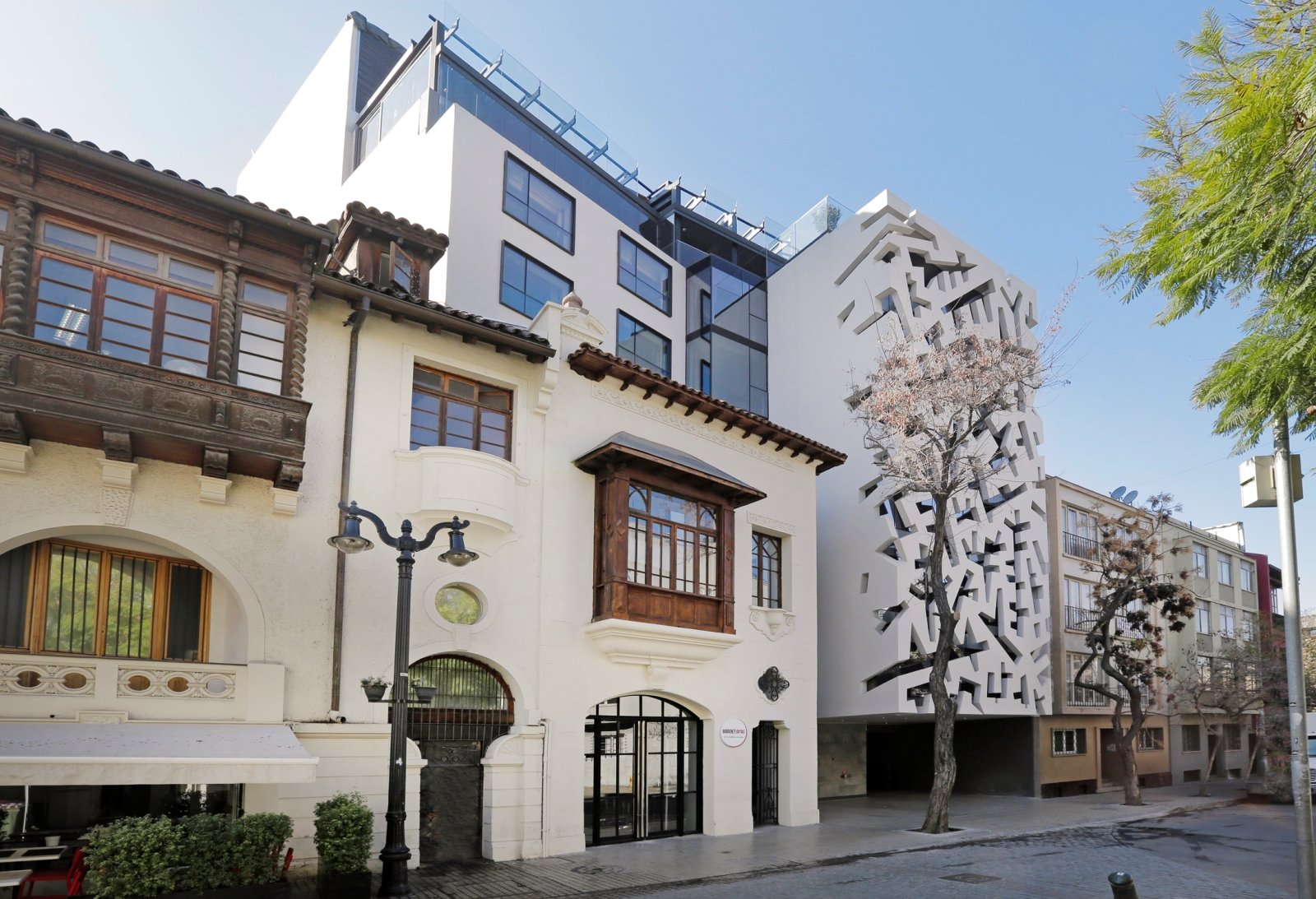#7198. Architectural Dialogue Across Eras: Harmonious Blend of Spanish Colonial Elegance and Avant-garde Perforated Facade

Before us is a striking example of architectural contrast in an urban environment, where traditional and contemporary styles coexist in remarkable harmony. In the foreground stands an elegant historic building with characteristic features of Spanish colonial style. Its pristine white facade is adorned with wooden balconies featuring meticulously crafted details, arched openings, and traditional tiled roofing. Note the delicate window frames, wrought iron elements, and textured surfaces that lend the building its authentic character.
Directly behind it rises a modern minimalist building with clean lines and large glazed surfaces. The white color of its facade echoes the historic structure, creating a visual connection between different eras. Particularly eye-catching is the dramatic structure on the right—a contemporary building with an abstract perforated facade resembling a sculptural composition of randomly placed geometric elements. This bold architectural approach creates a play of light and shadow on the building's surface, transforming a utilitarian structure into a work of art.
When designing your own facade, several valuable ideas can be drawn from this composition: the use of contrasting textures, combining traditional elements with modern materials, and playing with volumes and perforation to create interesting light and shadow effects. It's also important to consider the surrounding context, as demonstrated here, where even radically different architectural styles are unified through a common color palette and scale.